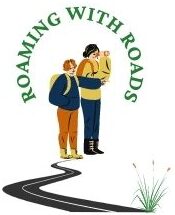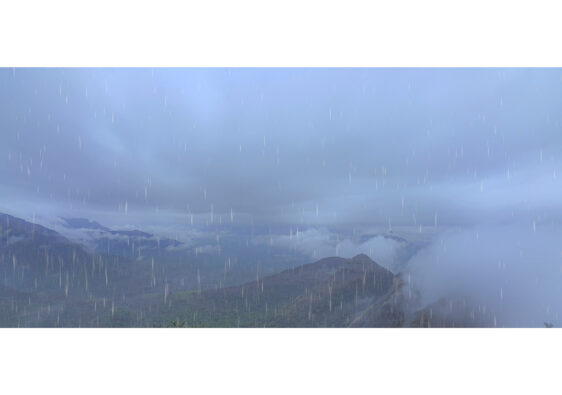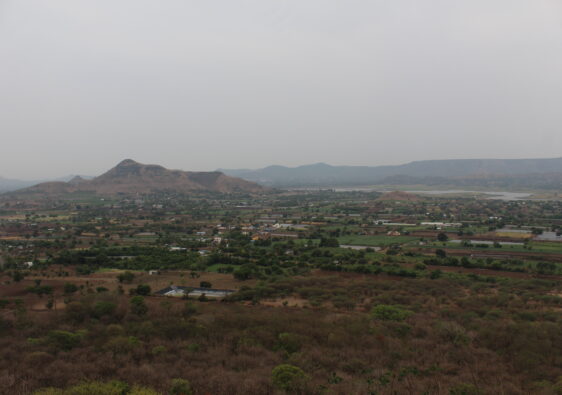We enjoy trekking as we feel connected with nature and its deep solitariness. It gives immense happiness as we go looking for a wildflower in the woods, a plant growing in a rock, identifying a bird through its song, listening to the sound of a flowing stream and finding a way to it, or simply just listening to the whispering of the wind.
Peth Shahapur near Lonavala is a village in Mulshi taluka of Pune district. It is the base village for the trek to Korigad Fort. Weekends are becoming increasingly crowded, so we planned to go on a weekday.
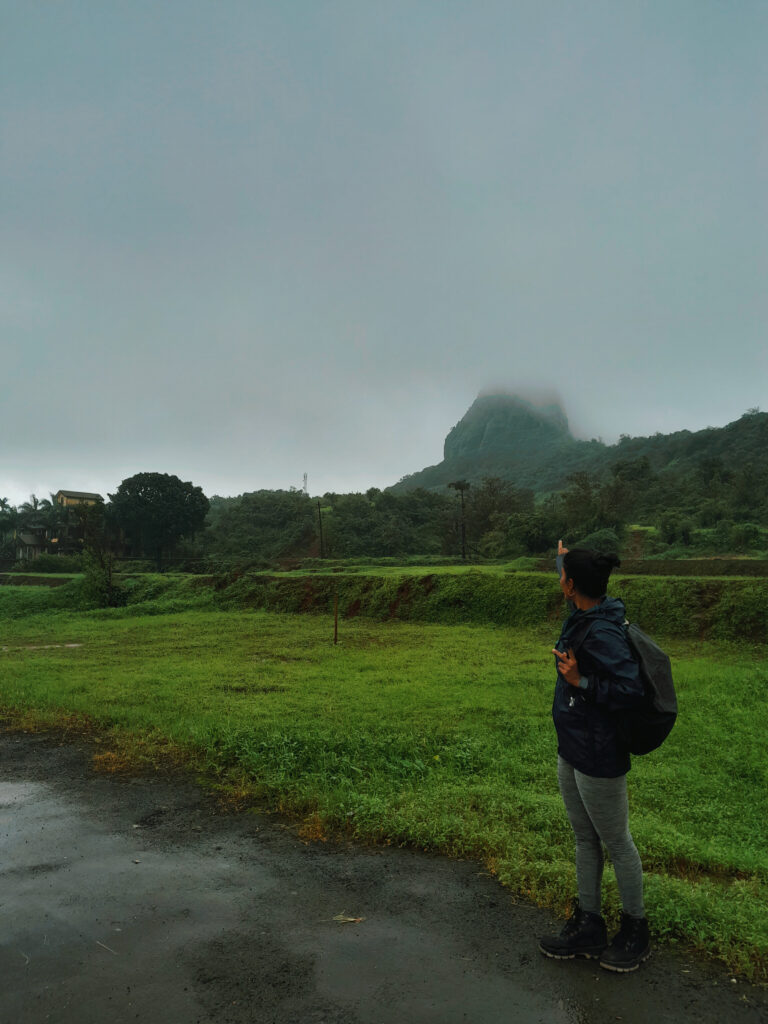
As we crossed the Chouk village on the Karjat-Khopoli road, it rained heavily. Silvery streaks of water adorned the surrounding hillsides. The clouds loomed over the hills as the trucks trundled up the Khandala Ghat, and we slithered past them. Khandala, at an altitude of about 600 m, has become one of the most popular weekend getaways, particularly during the monsoon. We rode along the old Khandala road. Continuing past Bushi Dam, a famous tourist spot during the rains, we proceeded through semi-evergreen and evergreen forests to the verdant Amby Valley, passing the restricted naval base, INS Shivaji. Swirling mists, heavy dark clouds, and howling winds made the ride magical in the monsoon.
The visibility of the roads was very low due to heavy mists. Trudging the motorcycle cautiously, cutting through the mist we reached the Peth Shahapur village. A car and two motorcycles were parked on the designated roadside parking point. As I parked my motorcycle, a village lady running a snacks stall approached me with a parking receipt. I obliged and also bought from her some biscuits for dogs in case any of them decide to accompany us on the trek, which they usually do.
Korigad is situated at an height of 929 m with cemented steps leading to its summit, making it one of the easiests forts to climb. There are two ways to reach the top. One is to follow the route alongside the tower, and the other is from the village. Both the routes meet at an intersection point from where one has to walk straight in dense forest until a small diversion to a right which leads to the base of the steps. From here, around 280 steps lead to the top of the summit.
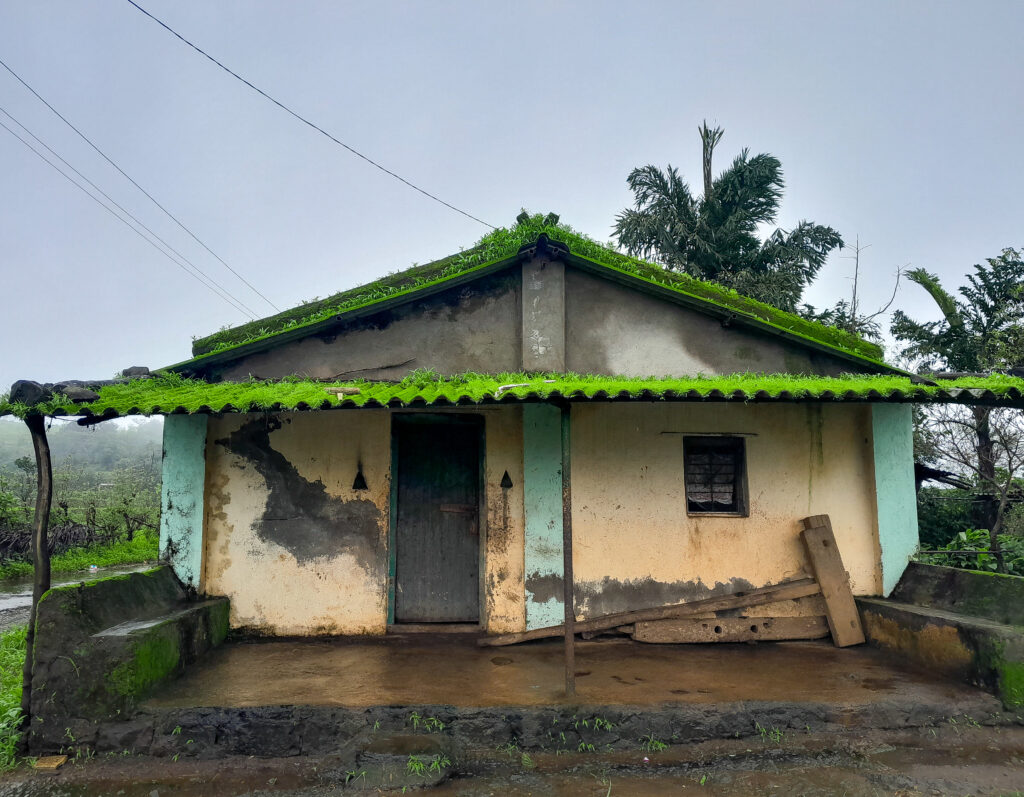
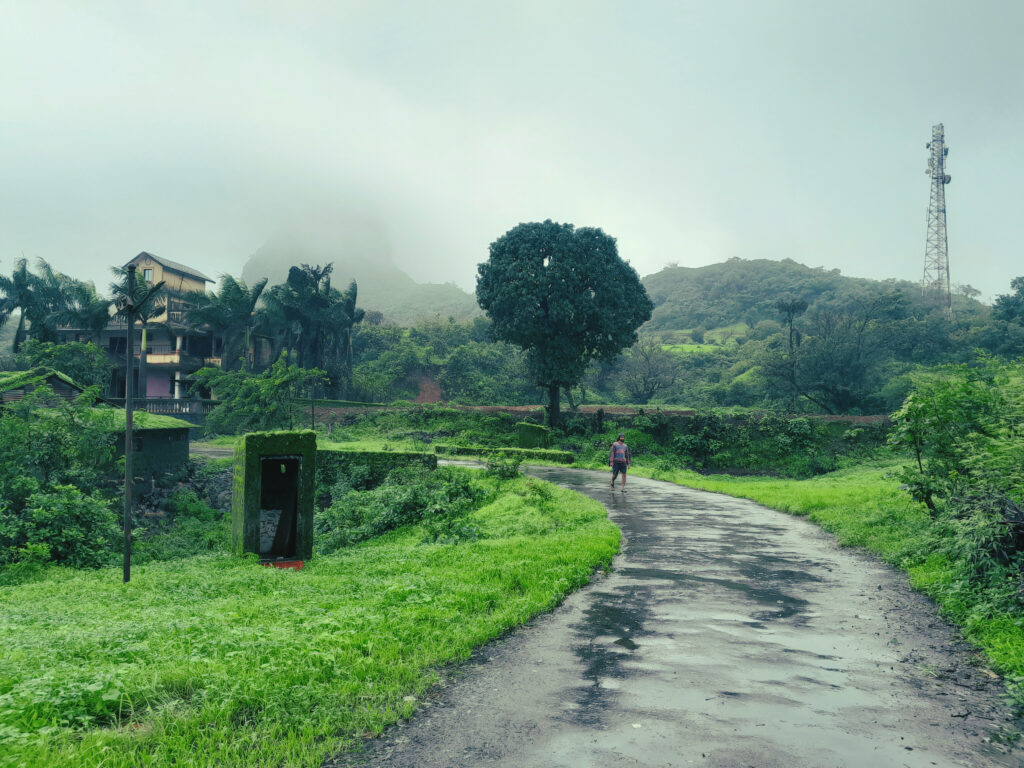
We took the village route. The countryside looked serene with sprawling green paddy fields. The clouds covered the outer wall of Korigad, hindering the view. Two small girls were tending to their goats, preventing them from entering the paddy fields. Bleating their way, the goats somehow entered the fields through the fences, and the poor girls had a tough time getting them out. Few houses lay deserted, covered entirely with moss. A farmer who wore a ‘ghongadi’ came out of the paddy fields and took shelter under a tree. (Ghongadi is a blanket used by farmers in Konkan to cover their head during paddy cultivation to protect from heavy rains)
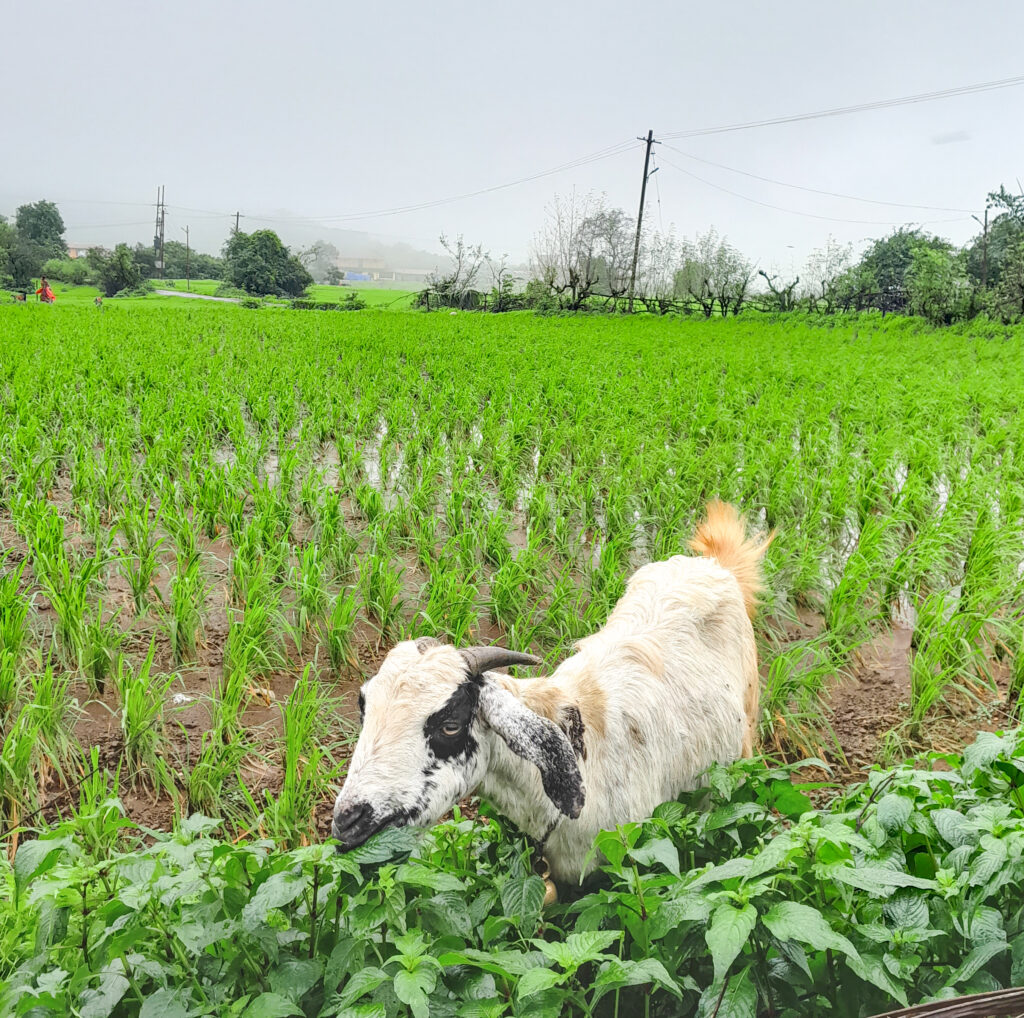
The clouds moved away giving a little glimpse of Korigad only to get enveloped again by another passing cloud. There is a temple at the end of the village where the tar road ends. From the temple, we took a right turn which led to a little climb onto the forested trail. The trail was dense and muddy. At a certain point of the trail, we had to search for the route through dense vegetation to the starting point of the cemented steps. We met a few trekkers who probably knew the way and we followed them till the steps.
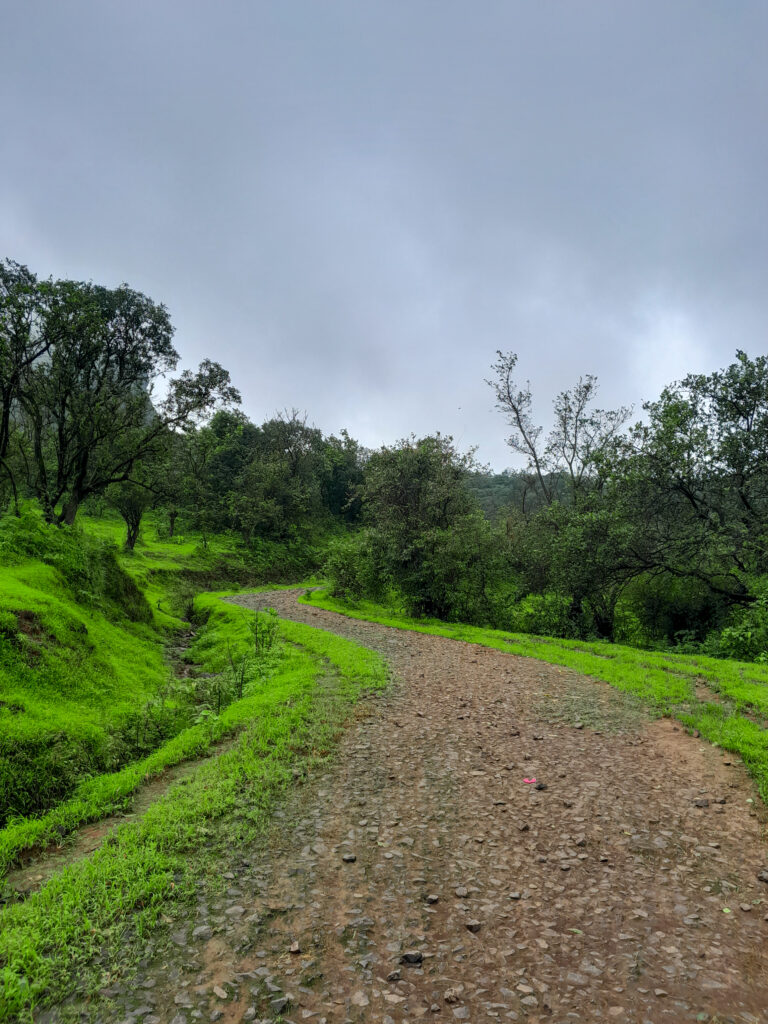
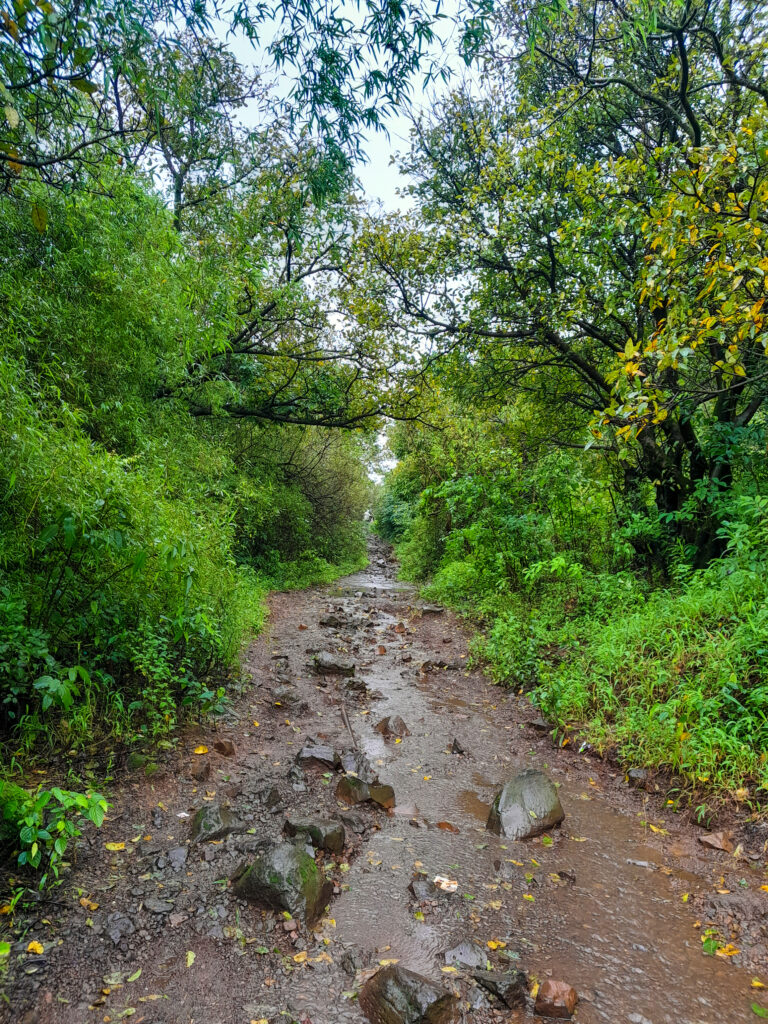
There is a board in Marathi at the entrance of the steps that highlights the history of Korigad fort in chronological order. A small stall at the entrance serves maggi, corn & other snacks. To the east, a road from Amby Valley ends directly near the start point of the steps.
After climbing some steps, we reached an open space which has a cave, known as ‘Gupt Guha’ (Hidden Cave) and a vermillion coloured stone idol of Lord Ganesha kept in a carved temple. There is a viewpoint here from where one can see the settlements of Amby Valley nestled beside a lake. A few more steps to climb from here. When it rains heavily, the water gushes down the steps in full flow. This step waterfall has recently caught the fancy of trekkers and adventurers, who want to experience this, making Korigad a popular weekend destination.
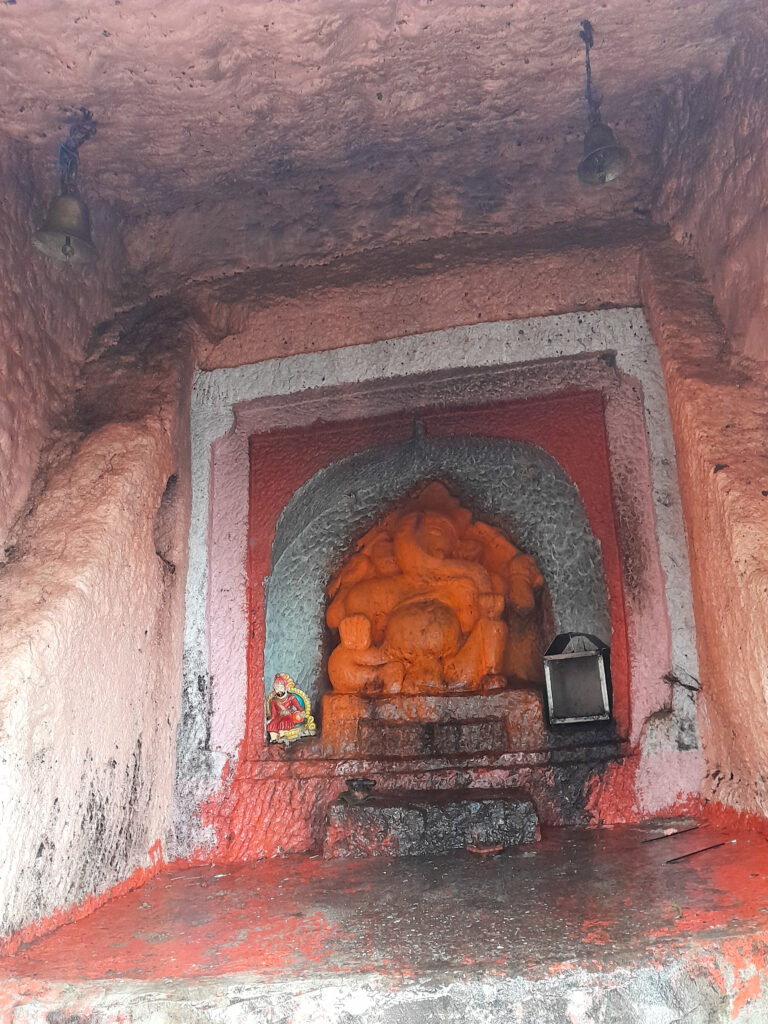
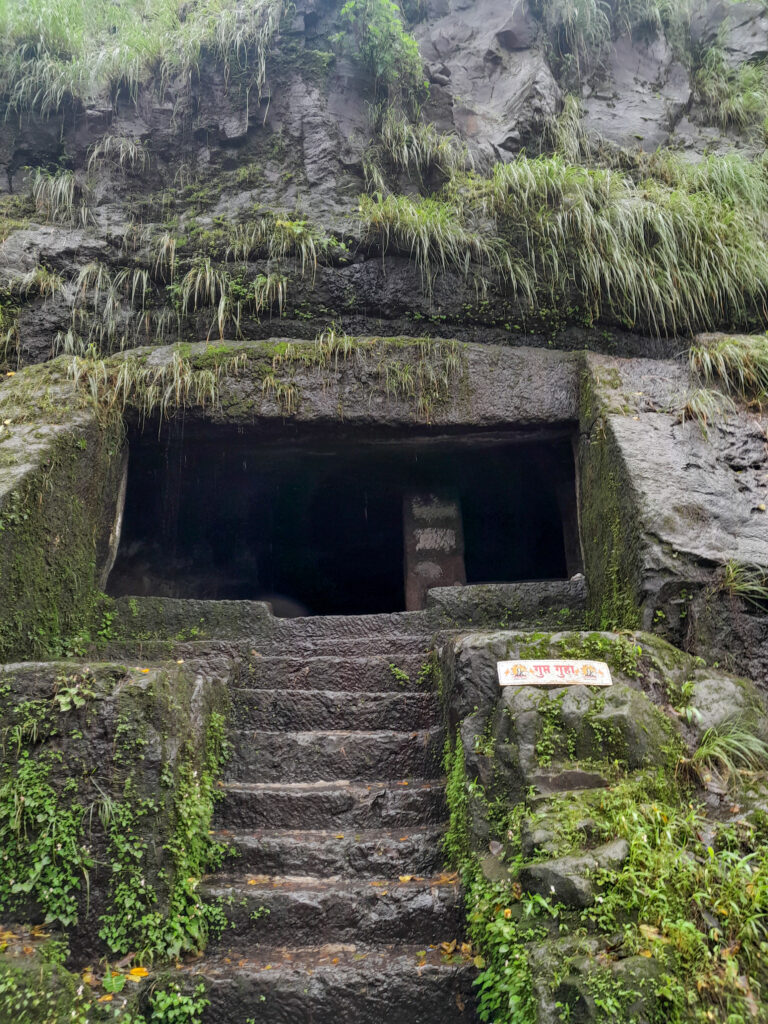
It felt good as we reached the entrance of the main door (Ganesh Darwaza). The door is intact and very beautiful. The texture, design and the chain lock looked solid and impressive. The top of the plateau is flat, and much of it is occupied by two big ponds, caves and small temples. There are two big bastions to the north and south side of the fort. To the south, there is another door from where one can get down to Ambavane village.
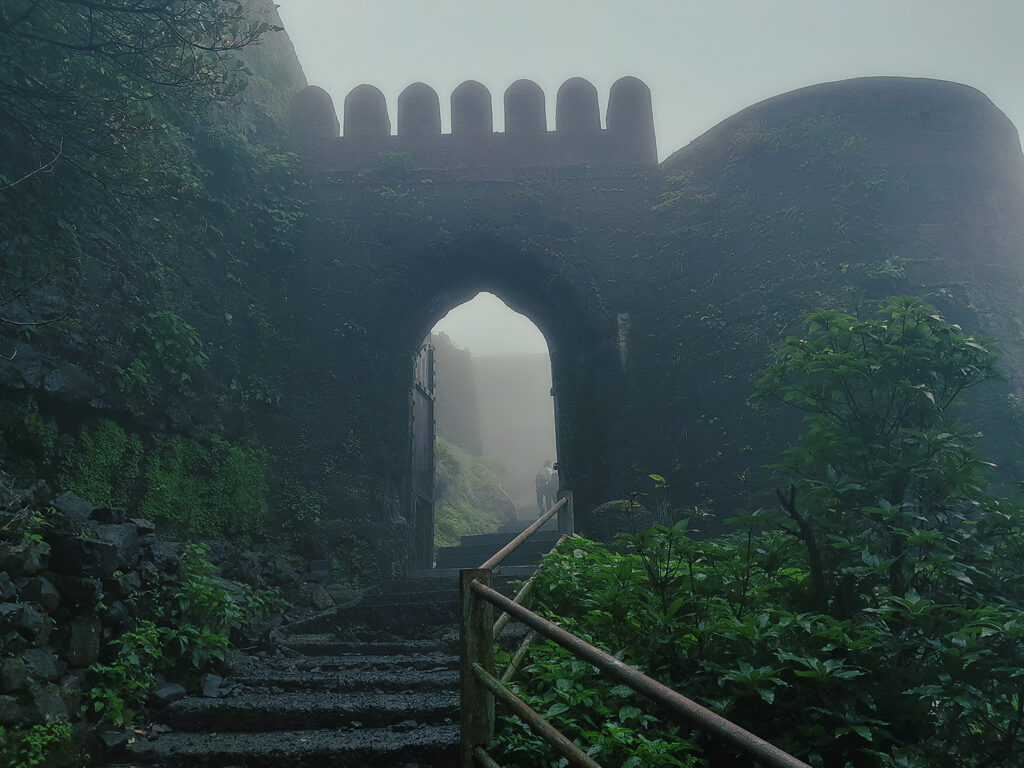
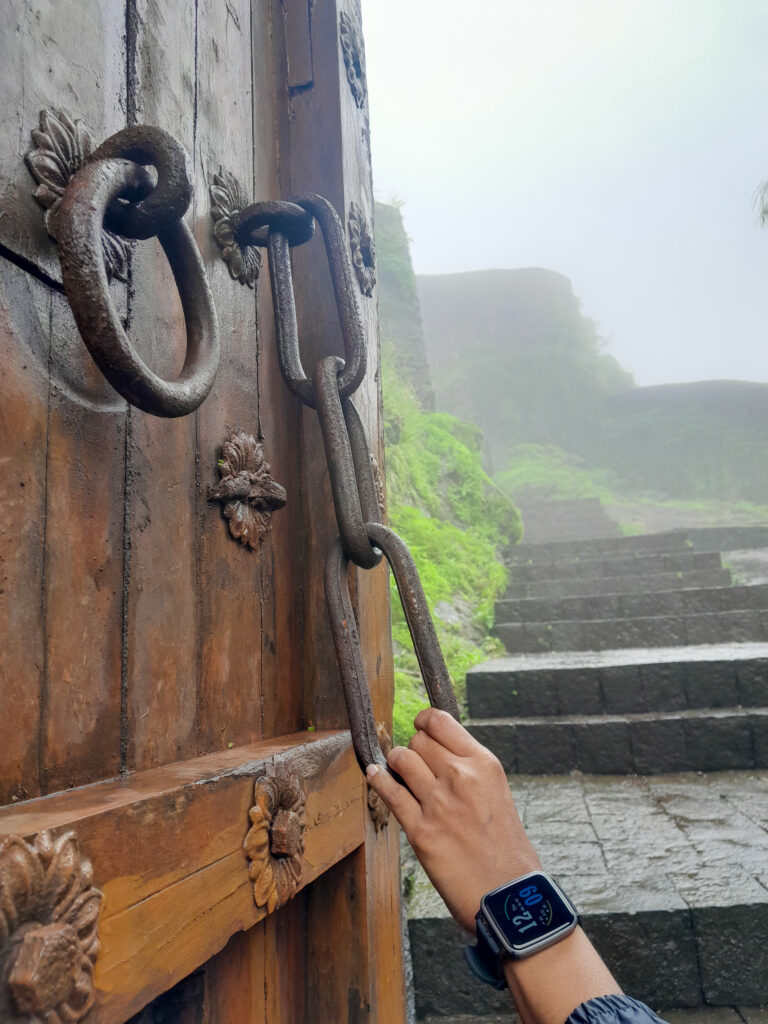
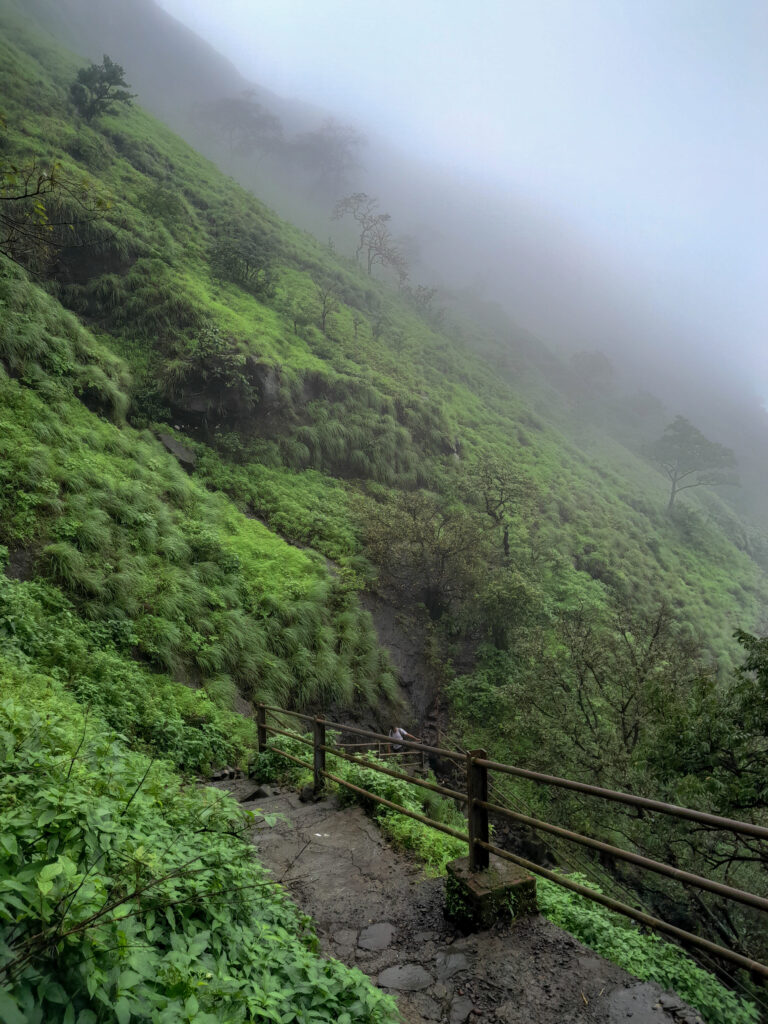
We couldn’t see any views that Korigad had to offer. The plateau was entirely covered in mist as far as we could see. Trekking in early monsoon is not about the views. It is the experience of the misty affair of the clouds with the hills. It rained heavily with strong gusty winds. Most of the trekkers kept themselves around the ponds and the Shiva temple which were near to the main door entrance.
We started walking in another direction and reached a temple dedicated to Goddess Korai Devi. There is a three foot high ‘DEEPMALA’ (tower of lamps) right in front of the temple, and a largest cannon known as ‘Laxmi Toph’ situated a few meters away. We sat here for some time. It was so peaceful.
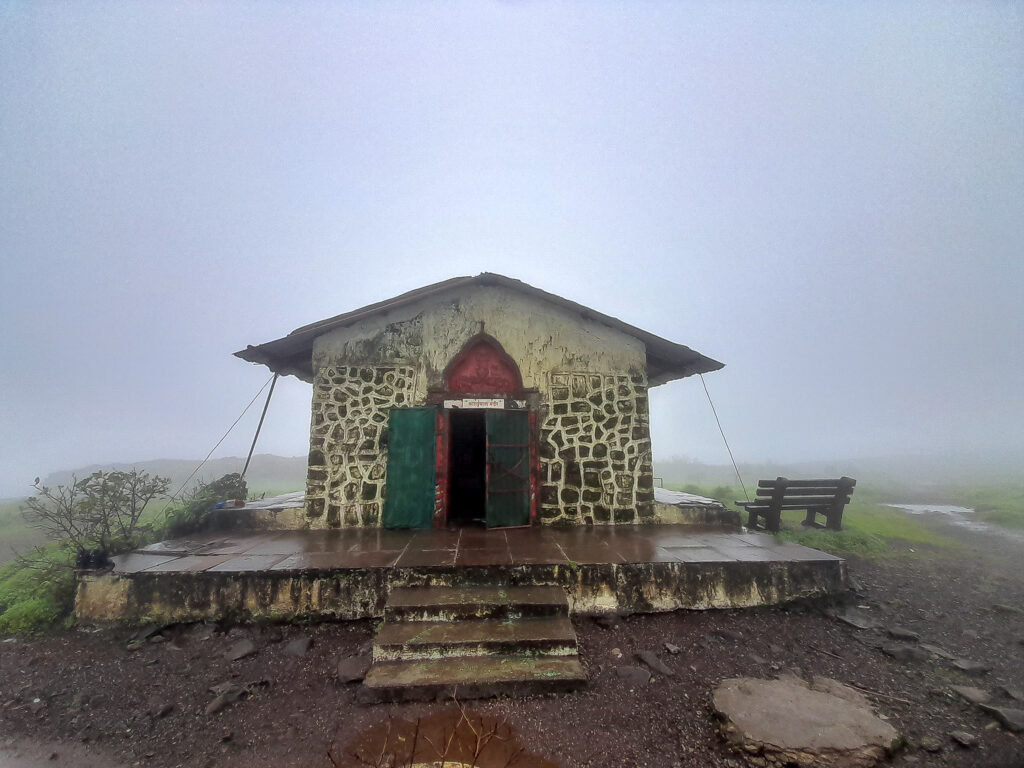
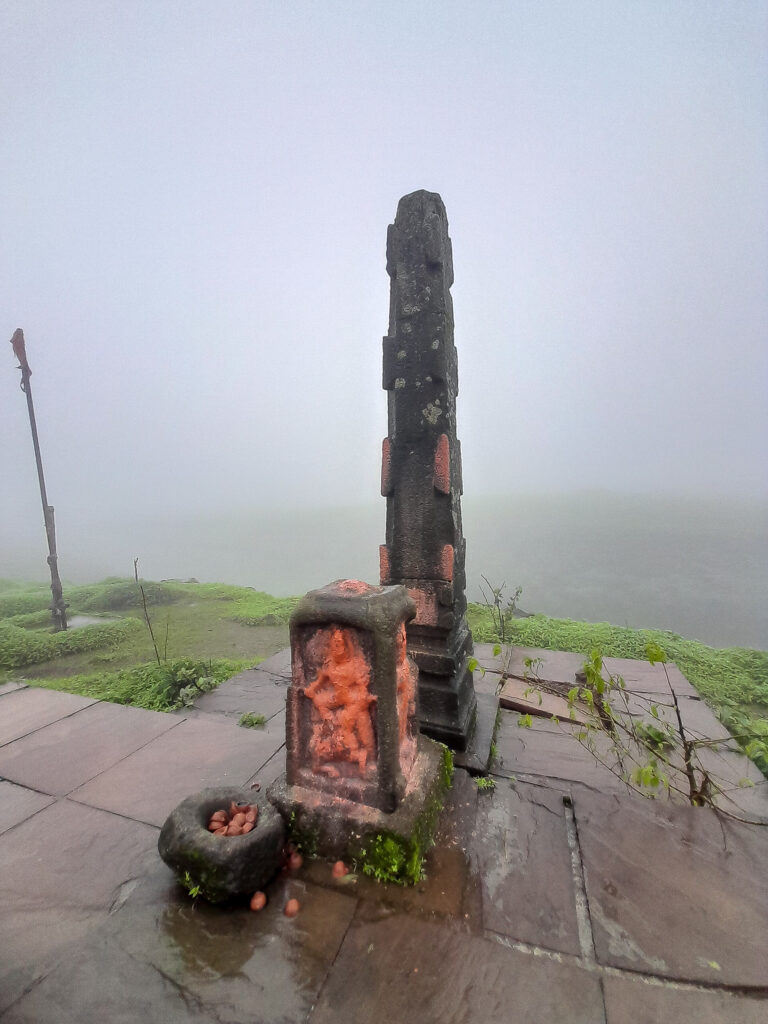
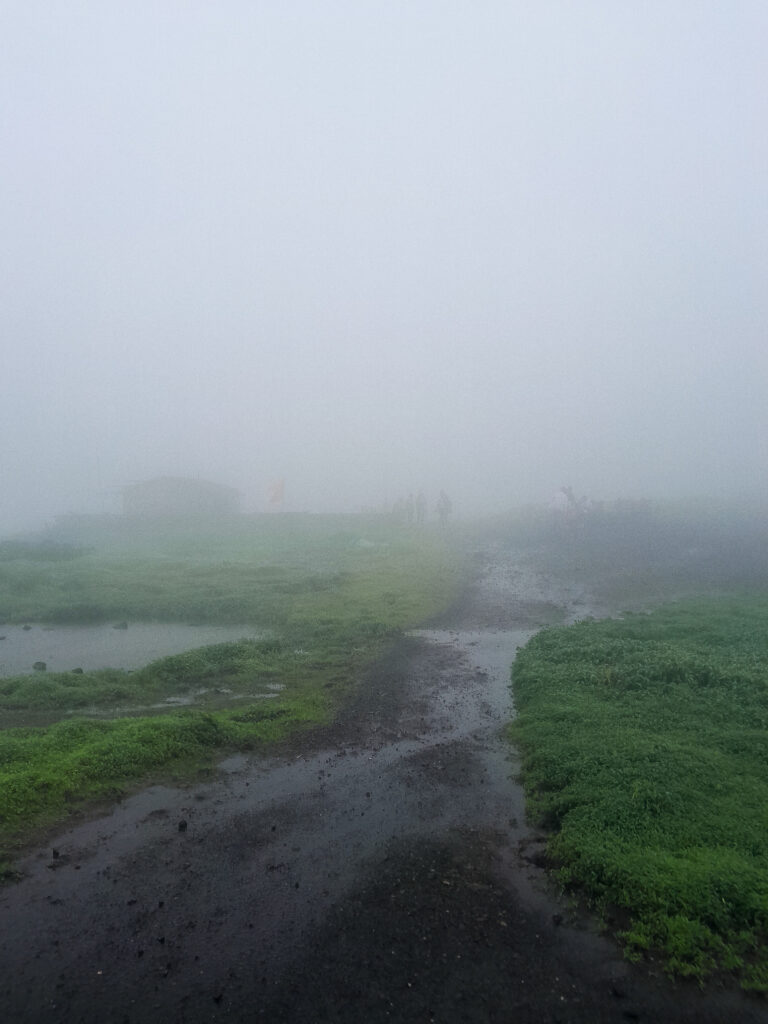
As silence crept in, I heard a sound of gushing water like something falling from a height. We were curious to find it and started following the sound. It was tricky in the mist to find the way. We took every step cautiously. A trail went down to a small open land. We stood on the top and watched for sometime if we could see anything.
Behind the window of mist, a small waterfall cascaded down the rocks. Strong winds blew continuously, pushing the water back to the top and turning it into a reverse waterfall. We started descending the trail holding the ground for grip amidst gusty winds. The wind howled fiercely at us, trying to shoo us away. But we were determined to go near the waterfall.
The water was cold, clean and clear. It felt like heaven. We were speechless. Only nature spoke in that moment. The wind and the rain were communicating with each other. And their conversation seemed so pure and meaningful that it refreshed our mind and soul.
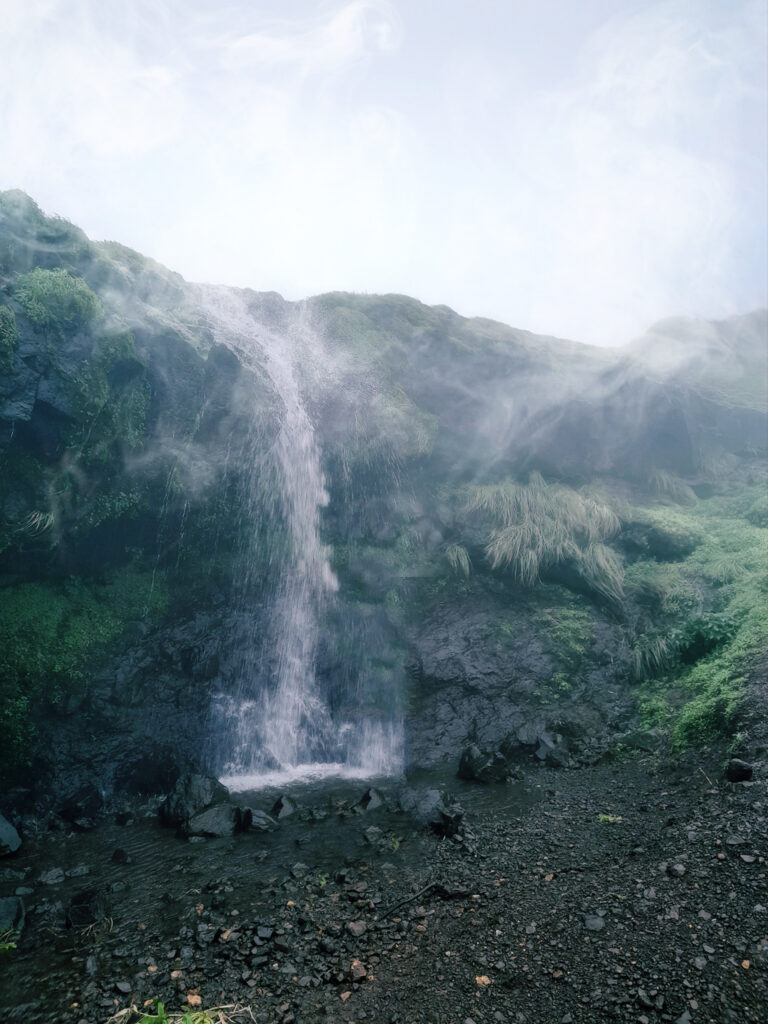
While fellow trekkers were all settled at one corner of the plateau, we were so overjoyed to find a corner of our own.
We started descending after spending an hour of peaceful time on the Korigad plateau. Due to heavy rain on the top, the flow of water had increased gushing down hurriedly below the steps. People were enjoying the step waterfall and they seemed to be happy spending most of their time on the steps. Little did they know that there was a place waiting to be explored on the top, a place which had much more to offer if only they could find a corner of their own.
